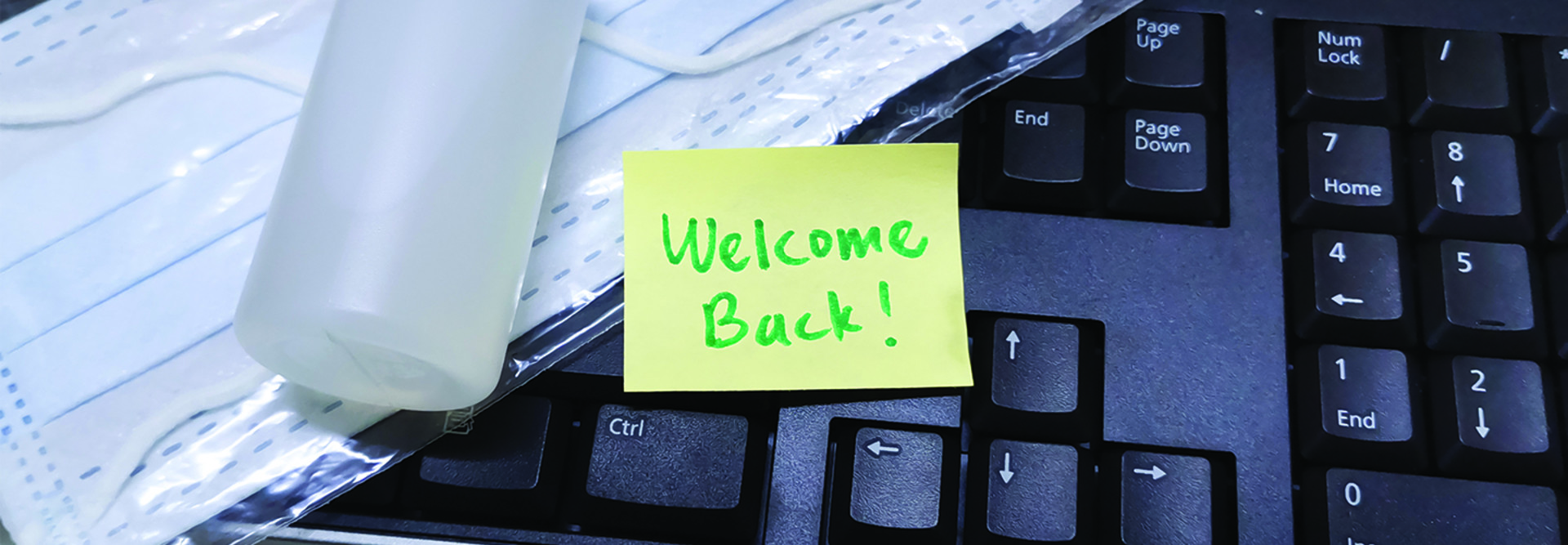After months of remote work, many organizations (and employees) are eager to return to the office. But reopening a physical workspace during a pandemic is not as simple as swiping a keycard and walking through the door.
Variables that were once not of concern to businesses are now major considerations. How do your employees get to work? Do they take public transportation? That creates an additional point of contact that could expose other employees. Are there multiple tenants in your office building? That could mean more exposure as well.
Those things may not be within your company’s control, but others are. How should you position desks around the office? Should you open the staff cafeteria? What about personal protective equipment and training people on safety precautions?
Too often, IT stakeholders might be running behind on these kinds of discussions, with human resources teams and building management departments taking the lead. But IT departments need to be part of those early conversations because they often manage some of the most important parts of the safety equation — including the testing technology to be used onsite and off.
DISCOVER: Learn how to make your business ready for the future of work.
How IT Departments Can Help Small Businesses Reopen
Onsite tech and equipment can go a long way toward helping employees feel safe. Tech teams might be in charge of putting together tools such as thermal scanning kiosks, sanitizing stations and occupancy tracking programs. They may also have to worry about things they never had to before, like disinfecting computers.
There are offsite considerations as well, such as symptom reporting apps for employees on their way to the office. Analyzing what other businesses, such as retailers, have done might offer inspiration.
The ultimate goal is to do safety checks in real time, but it also comes down to making sure your employees are comfortable with returning. If they’re not, this might further complicate things by requiring a hybrid office setup or even delaying the reopening process.
One idea that could help ease nerves: At CDW, we’ve been surveying our own employees to determine their comfort levels to understand whether they’re ready to return to the office and how often they might be willing to do so. Right now, it’s essential to keep your employees involved in the process of reopening; they need to feel secure in order to return safely and productively.
Challenges Tech Teams Might Face in Planning a Comeback
It’s one thing to simply discuss these ideas for reopening; it’s another to implement them. Small businesses face a number of pressure points in reviving an office or restarting a factory. Here are a few to keep in mind.
Cost: These are all new solutions, and if you have an unlimited budget, you can use such technology as artificial intelligence and thermal tracking cameras. Small businesses, however, may not have the resources to deploy such complex tools. For thermal scanning, for example, a kiosk that relies on handheld scanners may be more cost-effective than a camera system.
Supply: For organizations that do have the resources, there can still be challenges getting access to specialized equipment, which is high in demand. If your office can’t obtain the technology it needs for reopening, that can hold up your plan.
Logistics: The pandemic-era security needs of a business are different that those required pre-pandemic, and that may require some additional strategy. For example, setting up a thermal scanning station means that external doors that were once accessible need to be closed off to entry (but still allowing exit in case of a fire or other emergency).
Technical considerations: Some solutions that might prove valuable for small businesses, such as contact tracing, aren’t easy to implement. They may require new employee policies, such as limits to how many people can be in a room simultaneously. Giving employees radio frequency identification tags to track such behavior means a new piece of gear workers are responsible for, and while wireless networking-based solutions exist, they can be complicated to implement and may require additional investment.
Collaboration and Planning Lead to Successful Reopening
It may not be possible for your organization to implement all of these tools right away, but getting involved in the conversation early can help power a successful rollout that makes employees and the business feel protected. While delays in reopening may feel frustrating, this also allows for extra planning time, which could go a long way toward ensuring everything is on the right track.
Ultimately, the way to make this work comes down to two things: working as tightly as possible and collaborating with stakeholders in other departments that are facing similar challenges. Reopening may not be as easy as flipping a switch, but office comebacks can be done well — with the right planning.
This article is part of BizTech's AgilITy blog series. Please join the discussion on Twitter by using the #SmallBizIT hashtag.













